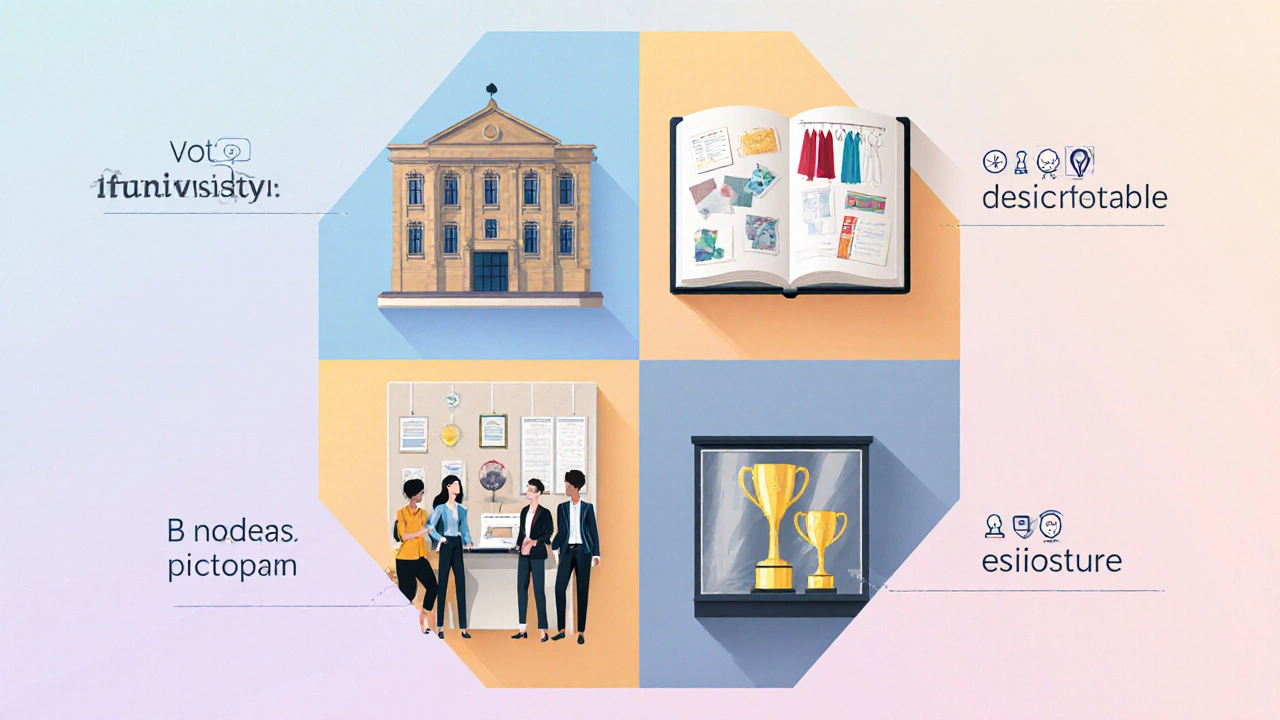Fashion Design Certification: What It Is, Who Needs It, and How It Opens Doors in India
When you hear fashion design certification, a short, focused program that teaches core skills like sketching, pattern-making, and garment construction for real-world fashion jobs. Also known as vocational fashion training, it’s not a four-year degree—but it’s often the fastest way to get hired in India’s growing apparel and retail sector. Unlike academic degrees, these certifications are built by industry professionals who know exactly what brands and small studios need right now: hands-on skills, not just theory.
Most fashion design certification programs cover essentials like hand-drawing silhouettes, using digital tools like Adobe Illustrator, selecting fabrics, and managing production timelines. You’ll learn how to turn a sketch into a finished piece you can actually sell. Many include live projects—like designing for local boutiques or preparing a portfolio for fashion fairs. These aren’t just classes; they’re mini-internships. And they’re especially valuable if you’re switching careers, starting a small label, or want to work as a freelance designer without the debt of a full degree.
Who hires people with this kind of training? Not just big names like Reliance Retail or Tata Cliq. Local tailors who want to upgrade to branded collections, e-commerce sellers needing product photos and descriptions, and even wedding planners looking for custom bridal wear all need certified talent. In cities like Delhi, Mumbai, and Jaipur, you’ll find small studios hiring certified designers at entry-level salaries that start around ₹15,000–₹25,000 per month—with room to grow fast if you build a strong portfolio.
There’s a big difference between a certification and a diploma. A textile design certification might focus only on prints and fabric patterns, while a full fashion design certification includes sewing, fitting, and retail basics. Make sure your course covers at least three of these areas. Avoid programs that only teach Photoshop or offer no live projects. Look for ones that give you a certificate signed by a working designer or brand owner—that’s the kind of proof employers actually check.
India’s fashion market is expanding fast, thanks to online shopping, rising middle-class demand, and government support for local artisans. But competition is growing too. A certification doesn’t guarantee a job—but it gives you a real edge over someone who just says they "know fashion." It shows you’ve been trained, tested, and can deliver. You’ll walk into interviews with samples, not stories.
Below, you’ll find real posts that break down exactly what to expect from these programs, which ones are worth your time and money, and how people just like you landed jobs after completing their training. No fluff. Just facts, salaries, and steps you can follow.

How to become a qualified fashion designer - requirements and steps
Learn the exact education, portfolio, experience, and certifications needed to be recognized as a qualified fashion designer.